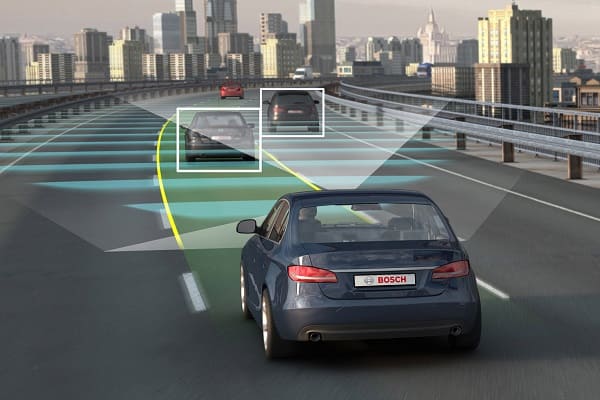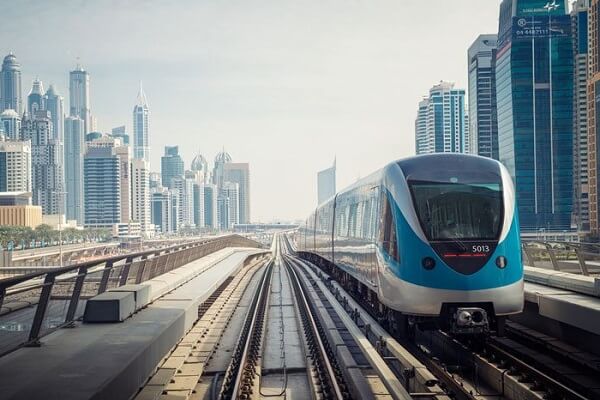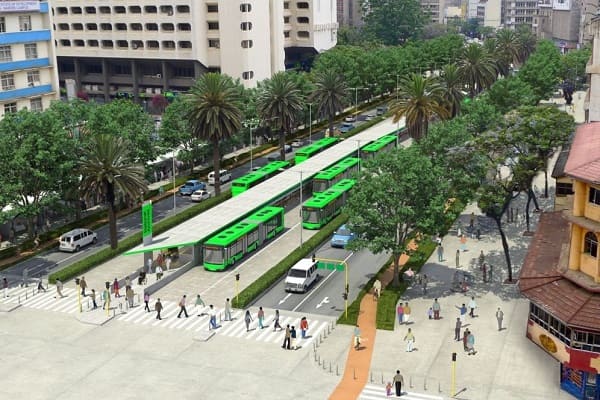 Delhi unveils ambitious Urban Mobility Vision: Luxury Metro Coaches, New Tunnels and Pod Taxi
Delhi unveils ambitious Urban Mobility Vision: Luxury Metro Coaches, New Tunnels and Pod Taxi Qatar approves Saudi Rail Link Agreement, Accelerating Gulf Railway Vision 2030
Qatar approves Saudi Rail Link Agreement, Accelerating Gulf Railway Vision 2030 UP Govt plans to introduce Water Metro services in Ayodhya, Varanasi & Prayagraj
UP Govt plans to introduce Water Metro services in Ayodhya, Varanasi & Prayagraj India’s First Urban Ropeway begins Trial Run in Varanasi, Set to carry 1 Lakh passengers daily
India’s First Urban Ropeway begins Trial Run in Varanasi, Set to carry 1 Lakh passengers daily India and Bhutan to Build First-Ever Rail Link: ₹4,033 Cr Project to Boost Regional Connectivity
India and Bhutan to Build First-Ever Rail Link: ₹4,033 Cr Project to Boost Regional Connectivity Patna to launch Eco-Friendly Water Metro; Trial Run soon between Digha and Kangan Ghats
Patna to launch Eco-Friendly Water Metro; Trial Run soon between Digha and Kangan Ghats Air India Group set to launch Flights Operations from Navi Mumbai International Airport
Air India Group set to launch Flights Operations from Navi Mumbai International Airport Chennai to launch 25-Year Mobility Plan with Unified QR Ticketing and One-App Transit System
Chennai to launch 25-Year Mobility Plan with Unified QR Ticketing and One-App Transit System Kochi Metro bags ₹4.4 crore contract to prepare DPR for Mumbai Water Metro Proejct
Kochi Metro bags ₹4.4 crore contract to prepare DPR for Mumbai Water Metro Proejct Navi Mumbai International Airport set for September launch; IndiGo and Akasa Air to lead Operations
Navi Mumbai International Airport set for September launch; IndiGo and Akasa Air to lead Operations
Driving into the Future: The Impact of Connected Vehicles on Urban Mobility

In the rapidly evolving automotive landscape, a profound paradigm shift is underway. This transformation is propelled by the seamless integration of cutting-edge technologies such as 5G, Artificial Intelligence (AI) and Machine Learning (ML), Natural Language Processing (NLP), and the concurrent ascent of cloud computing. These advancements are redefining our expectations of what vehicles can offer. In this uber-tech era, consumers are demanding a level of connectivity and convenience that goes beyond traditional transportation.
The Shape of Things to Come: Vehicles as Multi-Purpose Spaces
Picture this: a car that serves as both a cozy living room and a fully functional workspace on wheels. In today's context, this vision is not far-fetched. The metamorphosis of car cabins, once viewed merely as transportation pods, into multifunctional living spaces is already in motion. Remarkably, by 2022, approximately 25% of new cars worldwide came equipped with connected features, ushering in an immersive experience for both passengers and drivers.
Connected Vehicle Cabin: A Nexus of Intelligence
The vehicles of the future are designed to offer modular seating configurations, optimizing space and comfort. They resemble futuristic lounges or mobile offices on wheels, providing a versatile environment for passengers. Interactive displays with advanced touchscreens and augmented reality features further elevate the experience. These displays overlay digital information onto the physical surroundings, offering real-time guidance and enhancing safety.
Take, for example, the Mercedes-Benz all-electric EQS sedan with the MBUX Hyperscreen, which boasts three screens spanning an impressive 56 inches. These screens extend from the driver's side to the passengers, offering a range of functionalities, from adjusting preferences to playing games like Tetris. Voice control and AI-driven decision-making are at the heart of this revolution.
Central to this transformation is the concept of the 'Intelligent Cockpit.' This serves as the nerve center of the vehicle, seamlessly integrating various technologies and sensors. The result is a connected vehicle experience that is intuitive and safe, fostering effortless communication between the vehicle and its occupants.
The Role of AI and Machine Learning
AI and ML play pivotal roles in this paradigm shift. They analyze user data, discern driving patterns, and understand preferences to create a responsive cabin. Personalized seat positions, temperature settings, curated entertainment options, and suggested pit stops make each journey uniquely tailored to the passenger's preferences.
The 5G Boost: Faster Communication and Real-Time Data Exchange
The integration of 5G technology is instrumental in enabling faster communication and real-time data exchange. This empowers connected vehicles to provide seamless connectivity and an enriched user experience.
Understanding the Indian Market
India is swiftly emerging as a significant market for connected vehicles. A tech-savvy millennial population is driving the adoption of these advanced technologies. The connected car market in India is poised to reach $32.5 billion by 2030, growing at a compound annual growth rate (CAGR) of 22.2%. Automakers recognize this immense potential and are tailoring solutions to local preferences. They are also taking into account cultural aspects by offering support for regional languages, making technology more accessible and user-friendly for a broader demographic in this rapidly expanding market.
Millennials: Shaping the Future of Connected Vehicles
Globally, including in India, automakers are closely studying millennials' expectations. This demographic represents over 40% of new car buyers in the United States and similar percentages in other regions. Millennials prioritize interior features and aesthetics, viewing cars as extensions of their personalities and lifestyles. In response, manufacturers are creating bespoke designs that seamlessly blend connectivity, customization, and consumer identity into technologically advanced interiors.
The latest features aim to provide users with simple, seamless, and customized experiences that can be accessed with ease, enhancing user experiences. These features can be carried from vehicle to vehicle, akin to how apps and in-app features can be accessed across multiple devices, making it particularly useful for consumers who use more than one vehicle.
Shaping Smarter Cities through Connectivity
Connected vehicles, as they evolve into connected living spaces, are poised to play a crucial role in enhancing urban mobility by seamlessly integrating with smart city infrastructure. Leveraging Vehicle-to-Everything (V2X) communication, these vehicles are envisioned as active participants in a dynamic and interconnected transportation ecosystem. They will share real-time data with traffic management systems, receive updates on road conditions, and communicate with pedestrians and cyclists.
This integration holds the potential to revolutionize the way cities manage transportation, reducing congestion, and promoting eco-friendly practices. Powered by advanced technologies, these intelligent vehicles are not only optimizing journeys for efficiency, convenience, and safety but also contributing to the creation of smarter and more sustainable cities.
Conclusion
The future of urban mobility is undoubtedly intertwined with the evolution of connected vehicles. As automotive technology advances, the way we navigate cities and experience our daily commutes is being reshaped. The concept of vehicles as multifunctional living spaces is becoming a reality, driven by the convergence of innovative technologies. As these vehicles seamlessly integrate into the urban landscape, they hold the promise of a future where transportation is not just efficient but also an integral part of smart and sustainable cities.






